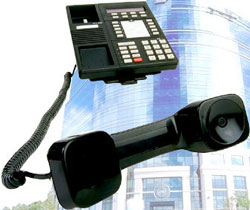Businesses have moved past analog phone lines, embracing PBX systems and ISDN PRI for their communication needs. However, there’s a new player in town: SIP Trunking. This technology offers potential cost and performance benefits for companies looking to enhance their voice services. Let’s compare SIP Trunks with ISDN PRI to understand the best choice for your organization.
 It’s important to note that both technologies rely on digital telephony, eliminating analog transmission. The key difference lies in their underlying models: ISDN PRI uses a switched circuit approach, while SIP Trunking utilizes packet switching.
It’s important to note that both technologies rely on digital telephony, eliminating analog transmission. The key difference lies in their underlying models: ISDN PRI uses a switched circuit approach, while SIP Trunking utilizes packet switching.
Many companies might find both options equally viable, as both trunking services can integrate with existing internal phone systems. Digital trunking aims to consolidate multiple external phone lines onto a single digital line, often using T1 lines, DS3, OC3 fiber, or Ethernet.
ISDN PRI, utilizing a T1 line, provides 23 individual voice channels and one dedicated channel for data and control functions. Connecting to ISDN PRI is usually straightforward with PBX and newer IP PBX phone systems, as they frequently offer built-in PRI ports or support for plug-in adapter cards.
Scaling beyond 23 lines is simple with ISDN PRI: just add more lines. Each added line can accommodate up to 23 additional business phone lines. While the capacity varies depending on the phone system, it’s common to see PBX systems equipped with two to four PRI lines.
The technology behind ISDN PRI is defined by the Integrated Systems Digital Network specification, with PRI representing the Primary Rate Interface. A less common, lower-performance option, BRI (Basic Rate Interface), also exists. ISDN PRI, as a legacy technology, focuses on providing individual digitized phone lines for each channel. This approach, employing Time Division Multiplexing, ensures no call interference through strict channel definition and timing.
SIP Trunking, on the other hand, functions more like a network than a telephone-centric technology. It operates on a packet-switched network line, similar to connections used between business locations. This allows SIP Trunking to directly support a converged network carrying both voice and data. Expanding voice and data networks geographically can be achieved by implementing SIP Trunks between business locations.
The “SIP” in SIP Trunking stands for Session Initiation Protocol, the switching technology employed in VoIP telephone systems. In this system, phone system control signals are packaged and transmitted alongside voice packets within the same network pipeline.
Convergence isn’t the primary focus of ISDN PRI. Instead, it centers on providing separate telephone and data lines. However, businesses can still opt for convergence within their internal network, using an IP PBX system to manage call routing, including external calls through the ISDN PRI trunk line.
Similarly, SIP Trunking doesn’t necessitate convergence. It can simply replace ISDN PRI as a means to connect a PBX system to a telephone service provider. The number of lines supported on a SIP Trunk can exceed 23, depending on the chosen CODEC (coding scheme). Ethernet-based connections to providers can potentially handle dozens of phone lines, subject to available bandwidth.
For smaller businesses, SIP Trunks offer the flexibility of carrying both voice and data traffic to their service provider. This configuration, often used for combining telephone lines and broadband internet service on a single SIP Trunk, presents a cost-effective solution even without a converged internal voice and data network.
Given that both ISDN PRI and SIP Trunking can potentially meet your requirements, the decision hinges on desired features and service availability at your business location. Multiple options might be available. To explore further, check out the available SIP Trunks and ISDN PRI options and pricing.

